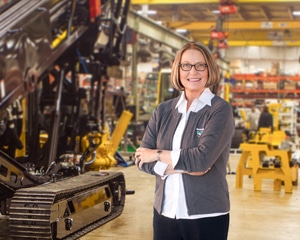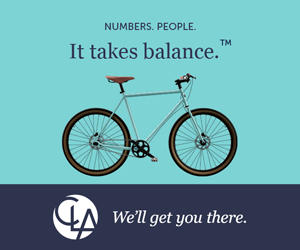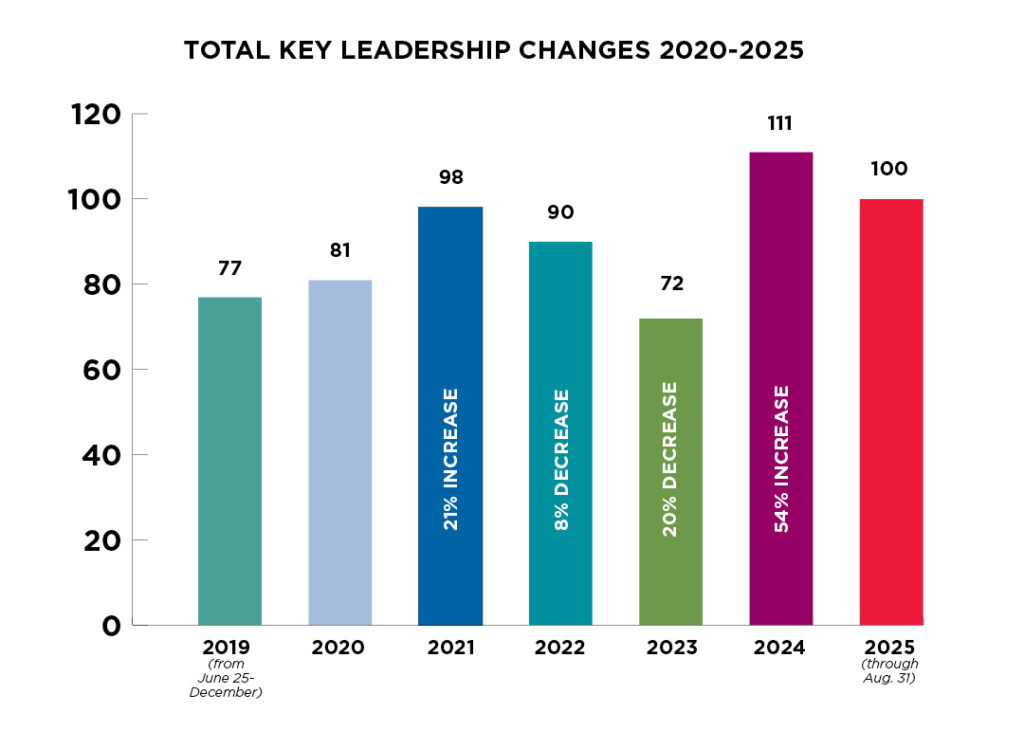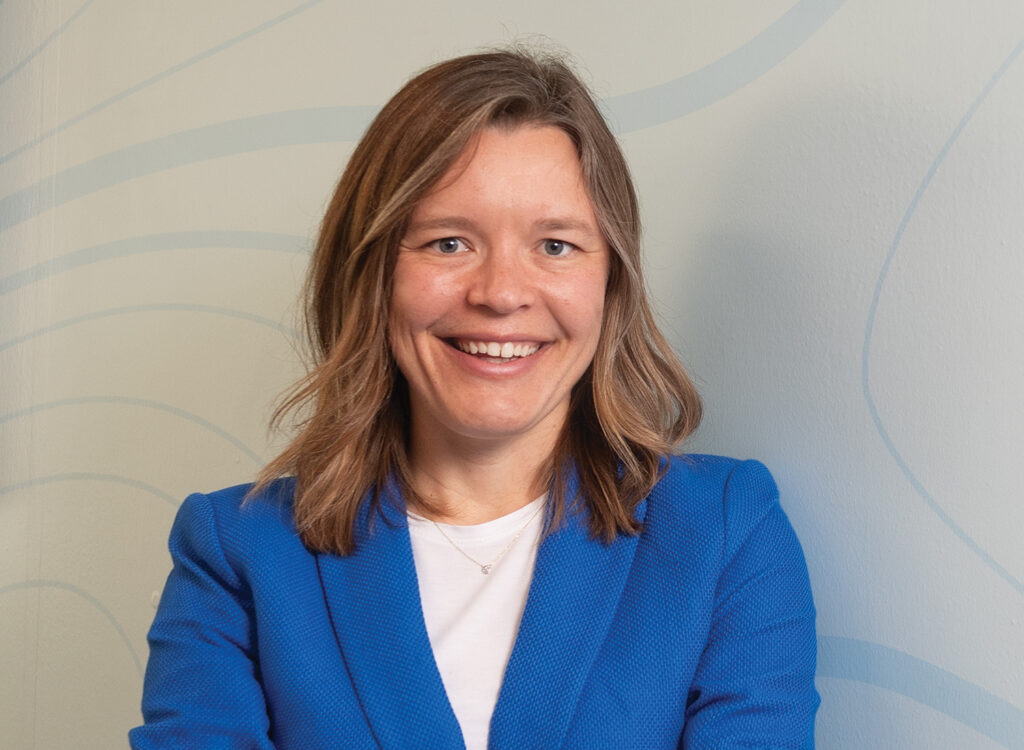Stemming Apathy
Andringa sees new interest in science, math, tech jobs

PERRY BEEMAN May 22, 2015 | 11:00 am
4 min read time
930 wordsBusiness Record Insider, Innovation and EntrepreneurshipMary Andringa is well-known in Iowa STEM circles, where some of the state’s best minds are looking for ways to encourage the study and application of science, technology, engineering and mathematics. She is CEO and board chairwoman at one of the state’s premier tech-savvy businesses, Pella-based agricultural equipment giant Vermeer Corp., and is finishing two years as co-chair of the Iowa Governor’s STEM Advisory Council. We checked in with her on how things are going in the classrooms, and how teachers can look for help in corporate boardrooms.
Is the demand for applicants in STEM fields still strong?
Almost every employer is looking for STEM-qualified applicants. There is one job seeker for every 3.4 STEM jobs in Iowa. We will need 67,000 STEM workers by 2018, and we were at 58,000 in 2008. There is a component of STEM in almost every job in our business. IT (information technology) is very big. Welders and machinists also are very important.
Have there been recent developments that help?
I’m glad to see the new business analyst master’s degrees coming at Iowa State (University) and (University of) Iowa.
Can the universities address the shortage of skilled workers alone?
No. We need to train up our own people. The graduates aren’t enough to meet our needs.
We have a very robust internship program (at Vermeer), for 40 college students. We get 400 applications for the paid internship. We usually make an employment offer in their senior year. We also have a tuition reimbursement program for our employees. We pay up to 100 percent of expenses, depending on their grades.
How else can companies help promote STEM?
For nearly a decade, we have had teachers coming into Vermeer for three weeks. They get paid, and they learn about manufacturing, information technology, the welders on the floor. We have high school teachers, and we are thinking about adding junior high. We had a teacher who said, appropriately, “You cannot hide from math,” even as a welder.
Do you hear from others about the need for STEM-qualified workers?
We had 300 salespeople from around North America and Latin America in town for sales training. It is their No. 1 concern to find qualified people to be service technicians. Customers continually ask us to help them find qualified people.
I have traveled to India, Poland and Turkey. The skilled workforce issues come up in every conversation.
What are you lacking at Vermeer?
The hardest thing for us to get is software analysts who can take big data from our machines and customer base and evaluate it and make it usable data to help us do our work.
How does STEM apply to a factory floor?
We use a lot of technology in every machine on the factory floor. There are a lot of quality checks and a lot of standards that have to be followed. People need to understand math and technology. Our products themselves have technology in them.
Does the average citizen understand the issue with STEM?
In Iowa, we are making progress in getting citizens to understand the importance of STEM. It is going to take some years. There is always more to do. We have a STEM pocket guide with a lot of good stats. Seventy-five percent of educators reported that they have gained skills and confidence in teaching STEM topics as a result of scale-up programs. Among students, 9 of 10 report a higher interest in at least one topic after scale-up programs. Those programs were started with help from the Legislature. We work STEM into curricula. The teachers get so excited. We help them get test tubes, etc. Sometimes schools use their own funding. It gets kids interested in something that they they weren’t interested in before. All levels of education are coming on board nicely. Community colleges jumped on a little sooner.
What metrics do you watch?
On the ACT test, we have increased the number of students who reached the science benchmark from 8,800 in 2012 to 10,800 in 2014. And 80 percent of those who took the Iowa Assessments reported they are more interested in STEM careers. The number of teachers with at least one endorsement in science or math grew 13 percent between 2012 and 2014. The majority of schools in our poll reported they had developed a new partnership with businesses in their area to help students learn about STEM opportunities. From 2009 to 2013, we saw a 43 percent increase in the number of degrees awarded by Iowa colleges and universities in STEM fields.
What are you missing?
I think awareness is still something we need to work on. We need more focus on preparing the teachers. We are working to increase student interest and achievement and to promote these careers.
The Iowa Governor’s STEM Advisory Council Executive Committee
Co-Chairs
Lt. Gov. Kim Reynolds
Mary Andringa, president and CEO,
Vermeer Corp.
Executive Director
Jeff Weld
Other members
Brad Buck, director, Iowa Department of Education
Kacia Cain, teacher, Central Campus, Des Moines Public Schools
John Carver, superintendent, Howard-Winneshiek Community School District, Cresco
Robert Denson, president, Des Moines Area Community College
Deborah Durham, director, Iowa Economic Development Authority
Steven Leath, president, Iowa State University
Sally Mason, president, University of Iowa
Robert “Kelly” Ortberg, president and CEO, Rockwell Collins Inc.
Mark Putnam, president, Central College
William Ruud, president, University of Northern Iowa
Paul Schickler, president, DuPont Pioneer
Gary Scholten, senior vice president and chief information officer, Principal Financial Group Inc.
Teresa Wahlert, former director, Iowa Workforce Development
Bradley Woody, president, DMG Mori Seike Co. Ltd./Ellison Technologies Tri-State Division
Gail Wortmann, instructor/developer, Iowa Learning Onlin










